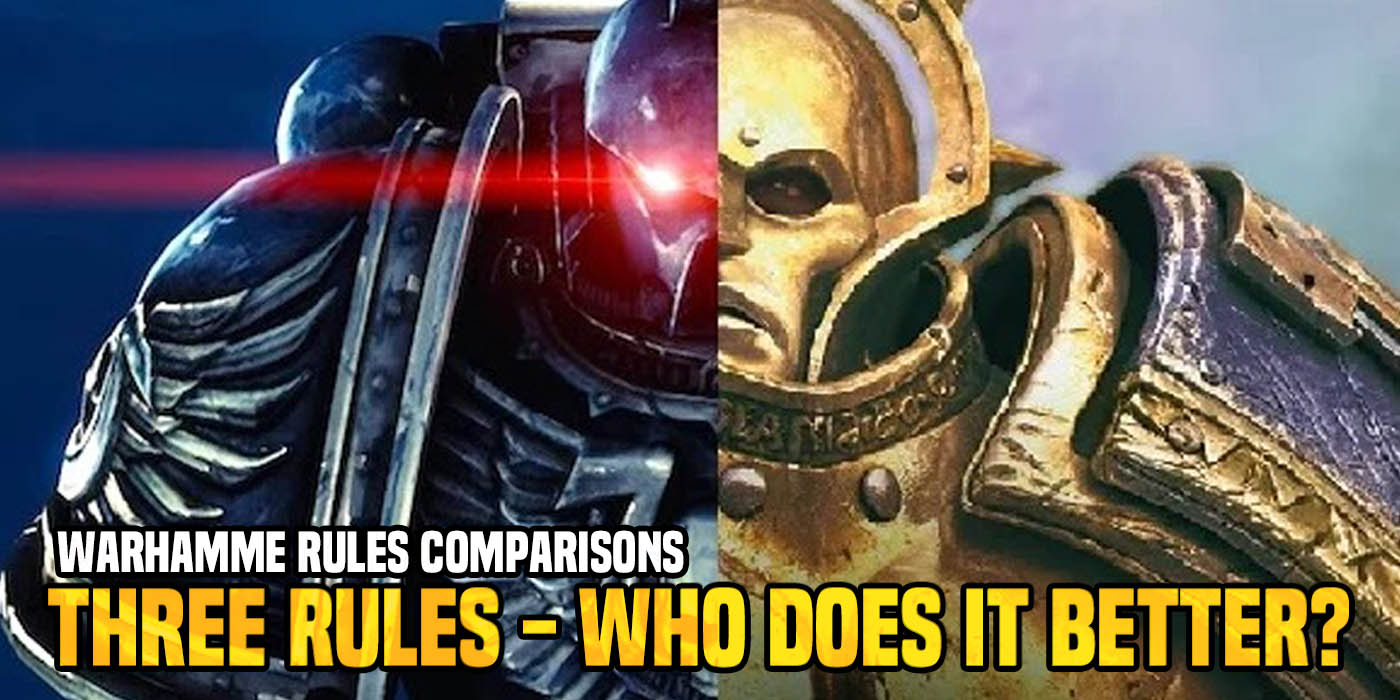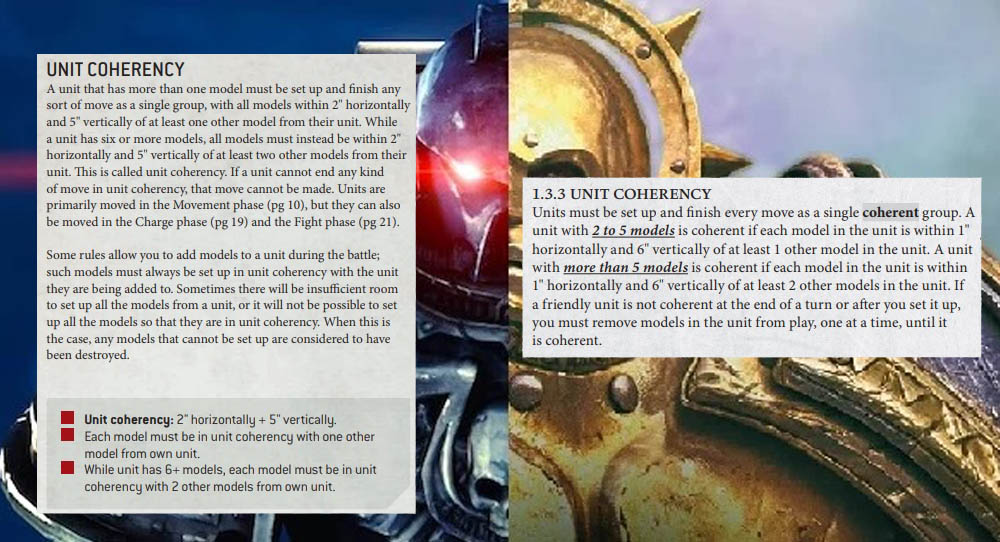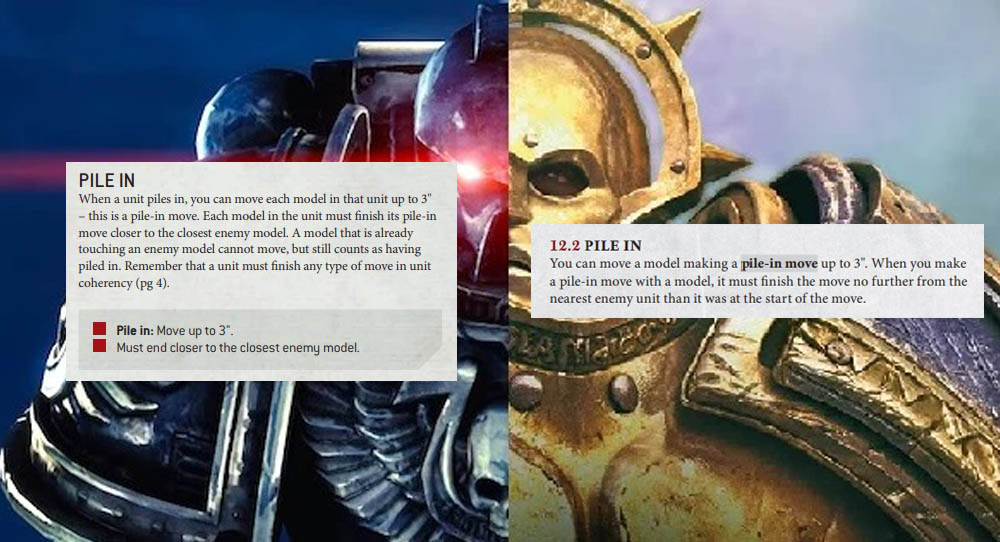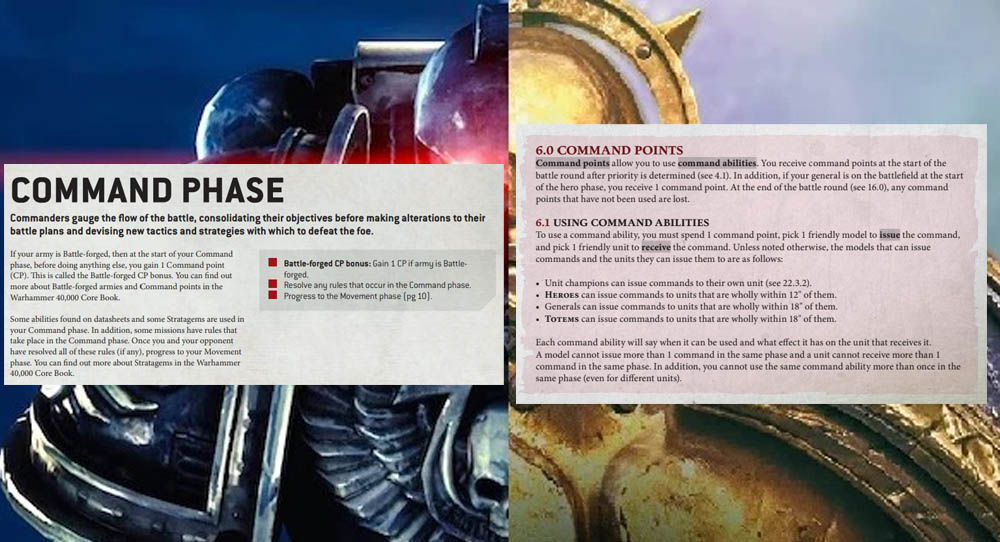Warhammer: Who Does It Better – Three Rules Comparisons Between AoS and 40K


There’s a new edition of Age of Sigmar on the way and it’s got some interesting rules. But who does it better – 40k or AoS? Let’s chat.
New editions are exciting times when we get to re-learn the rules for a game we all like to play. It’s fun to go through the rules once again and see what’s changed and what’s the same – or in many cases, what’s better and what’s worse. It’s also an interesting thought experiment to take a look at the two rulesets of 40k and AoS and take similar things and compare them. And that is what we’re going to do today. We’ve got three rules picked out from both systems that are relatively close – but play a lot different.
Now, before we begin, we need to acknowledge the fact that these two games ARE different. Just because one rule works like a champ in one system doesn’t mean it’s going to carry over and work perfectly in the other. That said, it’s still fun to compare and contrast the two. So if you’ve got a favorite system don’t take this as a personal attack – we’re just having some fun here comparing the rulesets.
If you want to read these rules you can do that for both systems directly from GW:
Warhammer: 40,000 Rules Download
Warhammer: Age of Sigmar Rules Download
On to the rules!
Rule Comparison #1 – Unit Coherency
Unit coherency is a *thing* in both games. This rule represents the fact that groups of like-models (aka units) need to stay near each other to function as a cohesive unit. These rules fulfill the same function in both games, but are clearly implemented differently. In 40k, it’s a bit more forgiving as it’s a 2″ distance between models while in AoS it’s only a 1″ distance (both are horizontal).
Again, ignoring the fact that these two games are different, 40k’s version is just easier and more forgiving. It is a little strange that the language used for the “6+ vs more than 5” models is different when they are essentially saying the exact same thing – but there ya go.
All else being equal, 40k’s version is “better” because it’s more flexible to pull off. Unless you want a more rigid approximation of rank-and-file movement on a classical battlefield…
Rule Comparison #2 – Pile-In Moves
This rule represents a unit closing the gap after a charge and getting up close and personal. There are some key differences here however.
Warhammer 40,000:
- Must end move closer to the closest enemy model
- A model in base to base with the enemy cannot move
Warhammer Age of Sigmar:
- Must end move no further from the nearest enemy unit
What’s implied there is that if a model is in base to base with an enemy model, they can still move around. Furthermore, they can also move out of base to base with a model in the unit as long as they end in base to base with another enemy model in that same unit.
Just based on the restrictions in 40k, the AoS version is “better” for tactical flexibility and getting your models into combat. You’re not locked into position, can shift around, and even move to a different model as long as it’s the same unit. AoS wins this round for sure.
That said, 40k is also a tad more forgiving on who can actually fight based on Engagement Ranges, too. It’s almost like these games are different or something…
Rule Comparison #3 – Command Points
Command Points are used in both systems, but for different things. In 40k, you spend them on various stratagems and also pre-game options. In AoS you use them to activate various Command Abilities and options during the battle. You also generate them very differently which is kind of the crux of the argument between which version is better.
As I keep mentioning, these games are DIFFERENT so each CP version works for their respective system as intended. That said, in AoS, you generate a significant number more CPs during the course of the battle vs the 40k version where you are essentially front-loaded on CPs. In AoS, those CPs also reset every round so you can’t stock pile them – they are a “use it or lose it” resource while in 40k, you can save them or spend them when applicable.
So which one is better? Personally, I like the CPs from AoS more than in 40k as they are less book keeping and you’ll get a reset ever round. But 40k does have the advantage in getting to use those CPs to use pre-game stratagems. This one really is a toss-up and it’s heavily weighted based on which of the two systems you’re playing in.
That said, could you exchange these two systems? That would be an interesting play testing experiment for sure. I’d kind of like to see how that could work out…
What do you think of these 3 different rules? Who do you think does it better in these cases: 40k or AoS?








